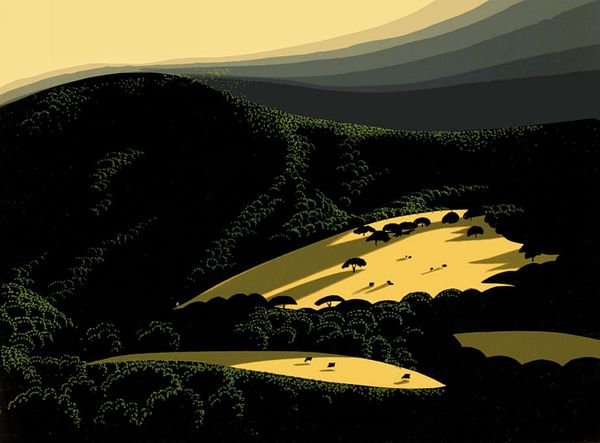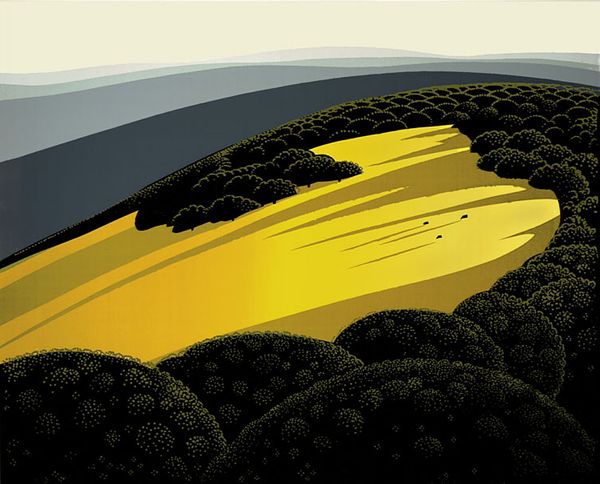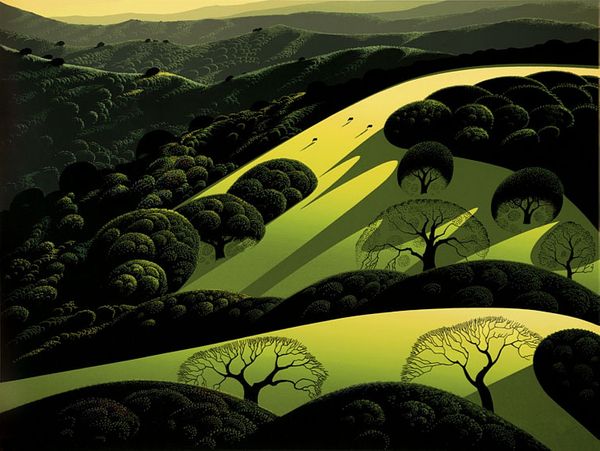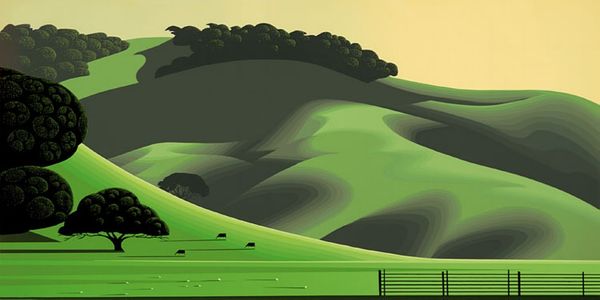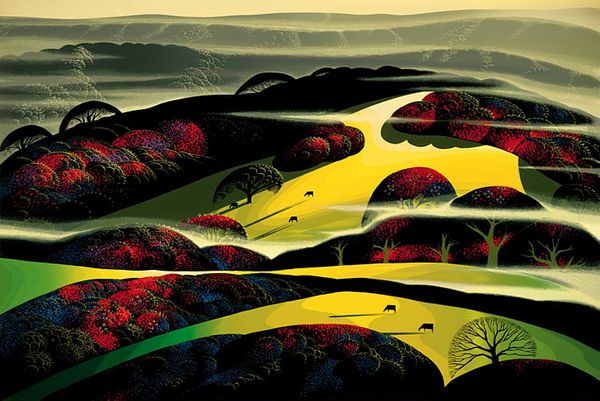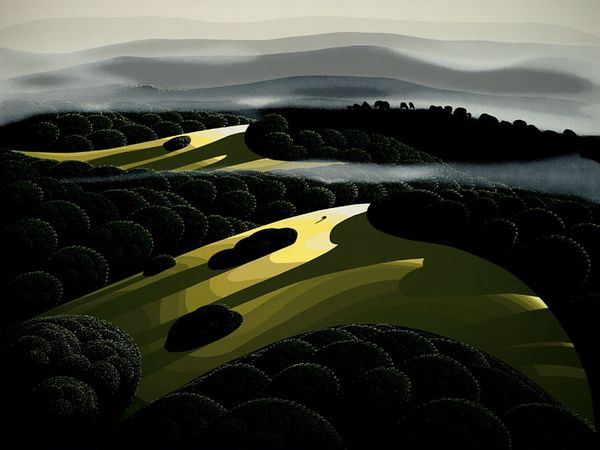
#
sky
#
cliff
#
childish illustration
#
cartoon like
#
cartoon based
#
vector art
#
digital art
#
caricature
#
digital drawing
#
rock
#
vector illustration
#
digital illustration
#
cartoon style
Copyright: Eyvind Earle,Fair Use
Curator: "Santa Ynez Foothills," created by Eyvind Earle in 1975, strikes me as an intriguing study in simplified forms. It is deceptively simple but so elegant. Editor: Yes, its graphical presentation and flat blocks of color almost feels like an advertisement for land development or environmental advocacy. The rolling hills and carefully placed trees evoke feelings of environmental stewardship, perhaps a commentary on land use. Curator: Precisely. Considering the artist's background as a backdrop artist for Disney, it's not surprising to see the emphasis on idealized, stylized forms. Look at how Earle flattens the landscape, reducing it to layered shapes. His artistic decisions reflect how he created animation backgrounds; these techniques focus on composition, clarity and color relations to drive an idea forward. Editor: Interesting. Did this method of illustrating come from limitations or a demand in visual storytelling to tell stories without speaking to specificities? Because the piece resonates with California’s history of promoting landscapes as sites of resource extraction and leisure. The tension between natural beauty and exploitation is quite clear. Curator: I think both readings are equally valid, what becomes curious, in my view, is what materials and industrial processes did he need to develop to obtain those crisp outlines? How does his design affect its circulation and marketability of this work? What social structures upheld the value of those prints? Editor: Fair points. We should ask: is it trying to be bucolic propaganda? And if so, who is it speaking to? Perhaps its simplified style reflects mid-century aspirations toward progress and prosperity. What kind of labor and resources did Earle engage to produce those lithographs for popular consumption? Curator: These types of queries move us from discussing the artistic composition towards its larger societal significance, urging a broader interrogation that uncovers its deeper layers of implications that force a revisionist study of that specific California region. It’s almost as if it beckons to engage our past ecological and social transgressions. Editor: Definitely. A powerful reminder that landscape is never neutral; it's always mediated by ideology, politics, and economics, and his artwork reveals those underlying structures. Thank you for bringing those concerns forward. Curator: Likewise. Viewing it through that particular lens of exploitation certainly expands our reading of it.
Comments
No comments
Be the first to comment and join the conversation on the ultimate creative platform.
